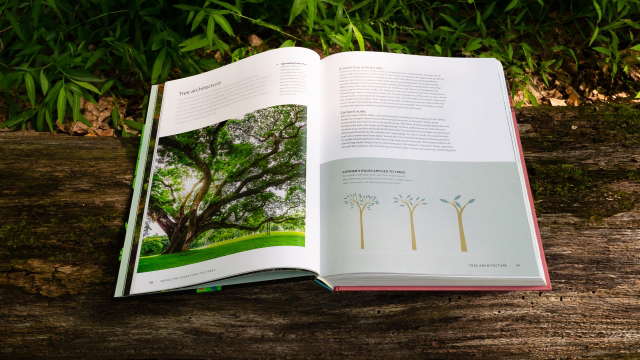Bookmark This is a feature that highlights new books by College of Arts and Sciences faculty and alumni, published the first week of each month. This month’s featured book is The World Atlas of Trees and Forests: Exploring Earth’s Forest Ecosystems (Princeton University Press) by Peter White, Herman Shugart, Sassan Saatchi and Jérôme Chave. White is a plant ecologist and professor emeritus of biology at UNC-Chapel Hill. We chatted with White about the book.
 Q: Can you give us a brief synopsis of your book?
Q: Can you give us a brief synopsis of your book?
A: The book has two ambitions. First, to survey the rich diversity of forests across the globe, in every continent and climate zone. Still, there are so many species of trees (over 70,000 in one study) on planet Earth and so many kinds of forests, that we have to approach the goal by picking representative patterns and highlights. Our second ambition was to include enough science and the excitement that comes from scientific research that it would also feel like an ecology textbook.
Q: How does this fit in with your research interests and passions?
A: I have spent my career in two worlds — first, in research at Dartmouth (and the Second College Grant, nearly 27,000 acres of rugged land in the New Hampshire north country), the Missouri Botanical Garden and the National Park Service (in Great Smoky Mountains National Park and as a professor at UNC-Chapel Hill); and second, in public education as director of the North Carolina Botanical Garden at UNC. Spending summers as a boy on a grandfather’s farm in Maine kindled my interest in trees and ecology.

Q: What was the original idea that made you think: “There’s a book here?”
A: I’ve always thought trees — and bookstores have shown this — represent a great opportunity for understanding the biodiversity and ecology of our planet.
Q: What surprised you when researching/writing this book?
A: For all of us co-authors I think the book was an opportunity to share what we think about, what questions we have helped to answer and what unanswered questions are still out there. So, it was more an outpouring of existing work than the discovery of new facts.
Q: Where’s your go-to writing spot, and how do you deal with writer’s block?
A: I have a home office that works fine. I find that the morning is a time to write, when the mind is fresh, and that, if the writing is just not “coming,” it’s best to put the work down and let the “back of the mind” work on the issues in the meantime.

In addition to professor emeritus of biology, White is also past director of the North Carolina Botanical Garden. The book, which features stunning color photos, maps and graphics, recently won two prestigious awards: the Dartmouth Medal for Outstanding Reference Work from the American Library Association and the PROSE Award in Environmental Science from the Association of American Publishers.
Library Journal wrote: “[A] beautiful introduction to the sister sciences of trees as individual plants and as forest ecosystems. … A visually pleasing volume to browse for anyone curious about the hidden forces that determine the location, appearance and functioning of forests in their backyard or around the globe.”
Nominate a book we should feature by emailing college-news@unc.edu. Find previous “Bookmark This” features by searching the term on our website, and add some books to your reading list by checking out our College magazine books page.

